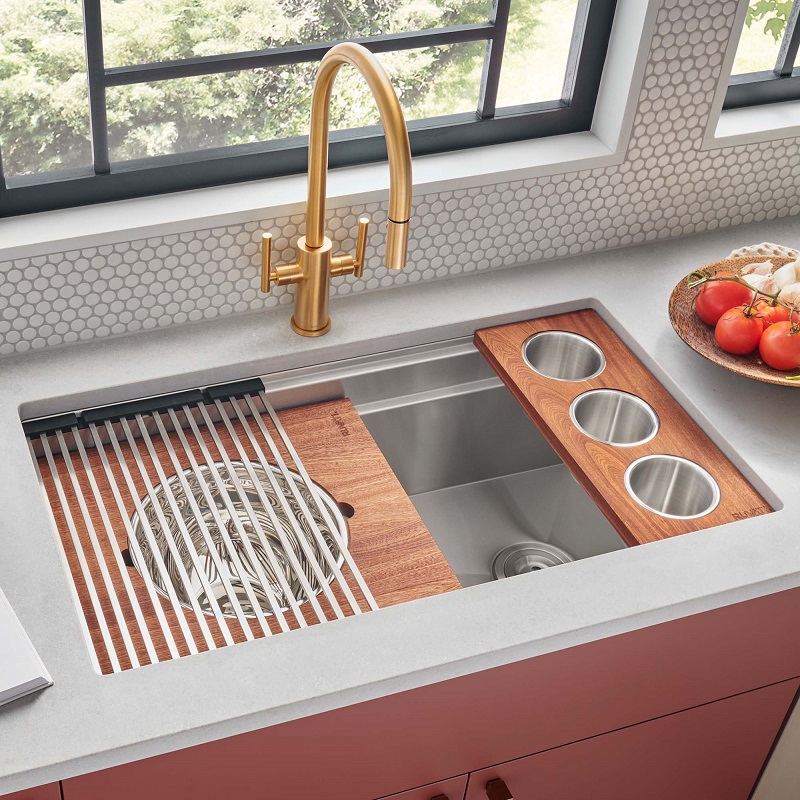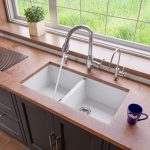Introduction
Choosing the right kitchen sink can make a significant difference in both the functionality and aesthetics of your kitchen. With numerous options available, it’s essential to understand the features that matter most. This guide will delve into the key factors you should consider, ensuring you select the perfect sink to meet your needs.
Types of Kitchen Sinks
Undermount Sinks
Undermount sinks are installed beneath the countertop, creating a seamless look. They’re ideal for those who prefer easy cleaning and a sleek appearance. Because there’s no lip on the countertop, crumbs and spills can be swept directly into the sink. However, undermount sinks require a solid surface like granite or quartz, and installation can be more complex and costly.
Drop-In Sinks
Drop-in sinks, also known as top-mount sinks, feature a rim that rests on the countertop. They are easier to install and fit most countertop materials, including laminate. Drop-in sinks are a good choice for DIY projects, but the visible rim may not offer the same clean look as undermount sinks. They can also be more prone to trapping grime between the rim and countertop.
Farmhouse Sinks
Farmhouse sinks, or apron-front sinks, are characterized by their exposed front panel. These sinks offer a distinctive, classic look and provide a deep basin that can handle large pots and pans. They are often made from materials like fireclay or stainless steel. The farmhouse style is ideal for traditional or rustic kitchens but may require custom cabinetry to fit properly.
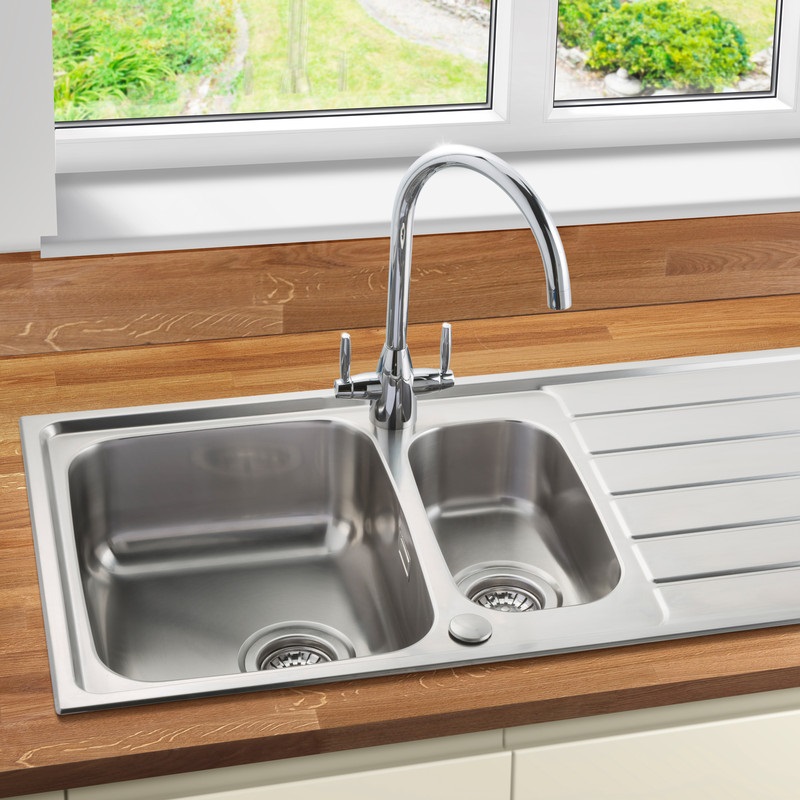
Sink Materials
Stainless Steel
Stainless steel is one of the most popular sink materials due to its durability and ease of maintenance. It’s resistant to stains, scratches, and rust, making it a practical choice for busy kitchens. Stainless steel sinks come in various gauges, with lower gauges indicating thicker, more durable metal. However, they can be prone to noise and fingerprints.
Composite Granite
Composite granite sinks are made from a blend of crushed granite and acrylic resins. They are known for their strength and resistance to scratches, stains, and heat. These sinks offer a high-end look and come in various colors and finishes. Composite granite is a great option for those seeking a balance of aesthetics and durability.
Cast Iron
Cast iron sinks are coated with a layer of enamel, providing a classic and durable finish. They are resistant to scratches and stains and offer a timeless appearance. However, cast iron sinks are quite heavy and may require additional support. They also require regular maintenance to prevent chipping and rusting of the enamel.
Sink Size and Configuration
Single Basin vs. Double Basin
When selecting a kitchen sink, consider whether a single or double basin configuration best suits your needs. Single basin sinks provide ample space for large pots and pans, while double basin sinks offer versatility for multitasking—such as washing dishes in one side and rinsing vegetables in the other. Your choice will depend on how you use your sink and your overall kitchen workflow.
Basin Depth
The depth of your sink’s basin is crucial for functionality. Deeper basins can accommodate large items and reduce splashing, while shallower basins may be more convenient for everyday tasks and easier to reach into. Consider your kitchen tasks and choose a depth that enhances your comfort and efficiency.
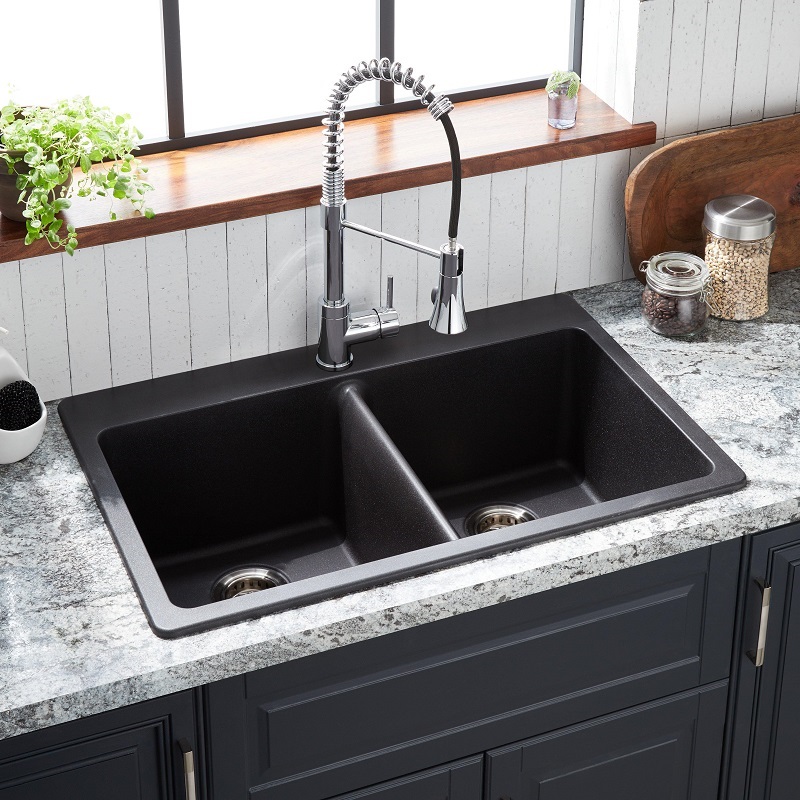
Sink Installation
DIY vs. Professional Installation
Installation complexity varies by sink type. Drop-in sinks are generally easier to install and may be suitable for a DIY project. Undermount and farmhouse sinks often require professional installation due to their specific mounting needs and the need for precise measurements. Assess your skill level and the sink type before deciding whether to tackle the installation yourself or hire a professional.
Cost Considerations
The cost of installing a kitchen sink can vary widely based on the type, material, and installation method. Drop-in sinks tend to be less expensive, while undermount and farmhouse sinks may require higher costs due to the complexity of installation. Additionally, high-quality materials and custom designs can further increase the overall expense.
Accessories and Features
Sink Grids and Protectors
Adding a sink grid or protector can help maintain the appearance of your sink by preventing scratches and dents. These accessories are particularly useful for stainless steel sinks, where they act as a barrier between dishes and the sink surface. Sink grids also allow for better drainage and air circulation, reducing the chance of odors.
Faucet Compatibility
When choosing a sink, consider the compatibility with your faucet. Ensure the sink has the necessary holes for faucet installation and any additional accessories you plan to use, such as soap dispensers or water filters. Some sinks come with pre-drilled holes, while others may require drilling during installation.
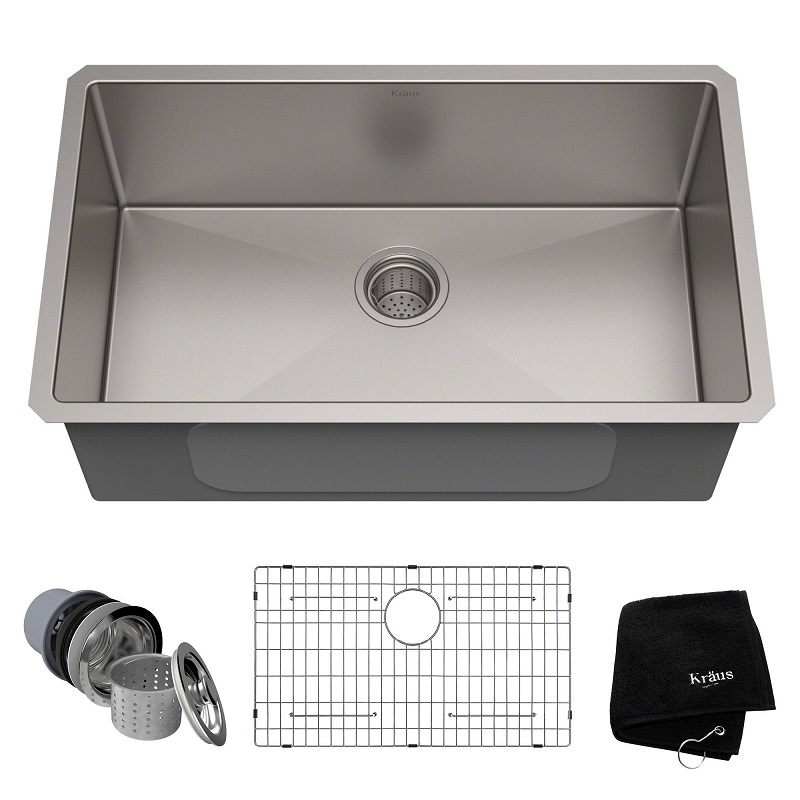
Maintenance and Care
Cleaning Tips
Maintaining your kitchen sink involves regular cleaning and care. For stainless steel sinks, use a non-abrasive cleaner to avoid scratching the surface. Composite granite and cast iron sinks may require specific cleaning agents to prevent damage. Regularly clean and dry your sink to avoid stains and buildup, and address any issues promptly to prolong the lifespan of your sink.
Long-Term Care
Consider the long-term care needs of your chosen sink material. Stainless steel sinks may require periodic polishing to maintain their shine, while composite granite and cast iron sinks might need occasional resealing or touch-ups. Understanding these requirements will help you make an informed decision and ensure your sink remains in excellent condition over time.
Trends in Kitchen Sink Design
Modern Aesthetic Choices
Today’s kitchen sinks come in a variety of stylish designs that can enhance the overall look of your kitchen. Minimalist designs with clean lines and sleek finishes are popular, complementing contemporary kitchen aesthetics. Matte black or brushed gold finishes are increasingly in vogue, adding a touch of elegance and sophistication. When selecting a sink, consider how its design will integrate with your kitchen’s décor and complement other fixtures and appliances.
Smart Features
The integration of technology into kitchen sinks is an emerging trend. Some modern sinks come with built-in smart features such as touchless faucets, integrated water filtration systems, and even LED lighting. These innovations can add convenience and efficiency to your kitchen routine, offering advanced functionality while enhancing the sink’s overall design.
Environmental Considerations
Water Efficiency
Water conservation is a growing concern, and many kitchen sinks now feature designs that help reduce water usage. Look for sinks with water-saving faucets and aerators that limit flow without compromising performance. By choosing a water-efficient sink, you can contribute to environmental sustainability while lowering your water bills.
Eco-Friendly Materials
If environmental impact is a priority for you, consider sinks made from eco-friendly materials. For instance, some composite sinks are made from recycled materials, while others use sustainable manufacturing processes. Choosing materials with low environmental footprints can help reduce waste and support more sustainable practices in your kitchen.
Customization Options
Color and Finish
Customizing your sink’s color and finish can allow you to match it perfectly with your kitchen’s color scheme and style. Many manufacturers offer a range of colors and finishes, including vibrant hues and textured surfaces. This level of customization helps ensure that your sink is not only functional but also a standout feature in your kitchen design.
Sink Accessories
Beyond basic features, a variety of accessories can enhance your sink’s functionality. Consider adding options like a cutting board that fits over the sink, a colander for easy straining, or a drying rack that integrates with the sink’s design. These accessories can make meal preparation and cleanup more efficient, tailoring the sink to your specific needs.
Conclusion
Selecting the right kitchen sink involves evaluating various factors, including sink type, material, size, and installation requirements. By understanding the top features and options, you can make an informed choice that aligns with your kitchen needs and personal preferences. Remember to consider long-term care and maintenance to ensure your sink remains a functional and stylish centerpiece of your kitchen for years to come.
